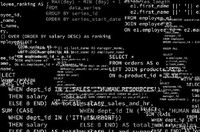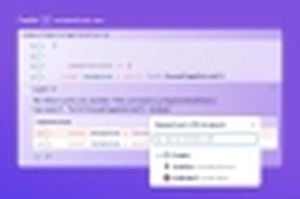In a groundbreaking development for artificial intelligence and programming, researchers at MIT have unveiled a novel approach that enables large language models (LLMs) to generate computer code with remarkable efficiency and accuracy. This innovative method not only streamlines the coding process but also ensures that the generated code adheres strictly to the rules of the relevant programming language, thus preventing potential errors that could lead to system crashes.
The research team, which includes MIT graduate student João Loula, along with co-lead authors Benjamin LeBrun from the Mila-Quebec Artificial Intelligence Institute and Li Du from Johns Hopkins University, has created a framework that guides LLMs in generating text that is both structurally valid and semantically accurate. Their work is set to be presented at the International Conference on Learning Representations, highlighting its significance in the field.
One of the most notable aspects of this new architecture is its ability to enhance computational efficiency. By employing a probabilistic approach, the model can prioritize outputs that are most likely to be valid, discarding less promising options early in the generation process. This allows smaller LLMs to outperform larger models in generating accurate outputs across various real-world applications, including molecular biology and robotics.
“This work has implications beyond research. It could improve programming assistants, AI-powered data analysis, and scientific discovery tools by ensuring that AI-generated outputs remain both useful and correct,” Loula remarked, emphasizing the broader impact of their findings.
The researchers utilized a technique known as sequential Monte Carlo, which facilitates parallel generation from multiple LLMs competing against each other. This method dynamically allocates computational resources to the most promising outputs based on their likelihood of being structurally valid and semantically accurate. As Loula explained, “It is much easier to enforce structure than meaning. We can quickly check whether something is in the right programming language, but to check its meaning you have to execute the code.”
To evaluate their approach, the team tested the framework on LLMs tasked with generating Python code, SQL database queries, molecular structures, and robotic plans. In one impressive demonstration, a small, open-source model utilizing this architecture was able to surpass a specialized, commercial closed-source model that was more than double its size in Python code generation.
“We are very excited that we can allow these small models to punch way above their weight,” Loula said, highlighting the potential for smaller models to achieve significant results.
Looking ahead, the researchers aim to expand their technique to encompass larger chunks of generated text rather than focusing solely on small segments. They also plan to integrate their method with machine learning, allowing the model to learn from its outputs and improve its accuracy over time.
In a separate but equally exciting development, Google Research recently introduced Cell2Sentence-Scale (C2S-Scale), a family of LLMs designed to interpret and generate biological data at the single-cell level. This innovative system transforms complex gene expression profiles into easily interpretable text sequences, known as “cell sentences.” These sentences consist of lists of the most active genes in a cell, ordered by their expression levels.
“What if we could ask a cell how it's feeling, what it’s doing, or how it might respond to a drug or disease — and get an answer back in plain English?” asked David van Dijk, Assistant Professor at Yale University and a key contributor to the C2S-Scale project. This ambitious project aims to make single-cell data more accessible and interpretable, opening new avenues for biological discovery.
The C2S-Scale models are built on Google’s Gemma open model family and have been trained on over 1 billion tokens from real-world transcriptomic datasets, biological metadata, and scientific literature. The family includes models ranging from 410 million to 27 billion parameters, allowing researchers to select the model that best fits their specific needs, whether for exploratory analyses or more intensive computational tasks.
One of the most promising applications of C2S-Scale is its ability to forecast how a cell will respond to various treatments or perturbations. This capability could revolutionize drug discovery and personalized medicine by simulating cellular behavior in silico, offering faster and more ethical alternatives to traditional experimental methods.
“With more data and compute, biological LLMs will keep getting better, opening the door to increasingly sophisticated and generalizable tools for biological discovery,” van Dijk noted, emphasizing the potential of these models to transform the field of biology.
Meanwhile, in a related initiative, Saudi AI scholar Bader Alsharif is developing an AI-powered system to help bridge communication gaps between the deaf and hard-of-hearing community and the wider public. Having worked closely with this community for over 16 years, Alsharif recognized the challenges posed by the public's limited understanding of sign language.
“I realized that if this barrier could be overcome, it would not only improve this community’s ability to communicate but also help the wider public better understand the lives of those who rely on signing,” he explained.
Alsharif's system uses a camera to capture hand gestures, which are then analyzed by AI models employing deep learning and hand tracking. The dataset for this project includes nearly 130,000 images of hand gestures, each with 21 data points to aid in accurate identification and translation into English.
Currently, the system translates sign language into English, but Alsharif aims to expand its capabilities to include translations for various languages, including Saudi Sign Language. His ultimate goal is to create a two-way translation system that can also convert spoken language into sign language.
As he pursues his doctoral studies at Florida Atlantic University, Alsharif continues to explore how AI can address real-world challenges, particularly in supporting individuals with special needs. His work exemplifies the intersection of technology and social impact, showcasing the transformative potential of AI when applied thoughtfully.
With these advancements in AI and language processing, the future looks promising for both programming and biological research, as well as for enhancing communication for those with hearing impairments. As researchers and scholars continue to innovate, the possibilities for AI applications appear limitless.





